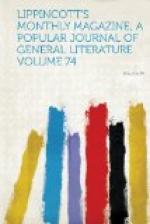The Slavonic liturgy of Russia seemed in a state of hopeless corruption when, toward the middle of the seventeenth century, the patriarch Nikon determined upon a measure of reform. In addition to a degree of cultivation unusual in his age and country, and an enterprising and determined character, he possessed what was specially required for such a step: he had learning, firmness and power, for through his influence over Alexis, the czar, he ruled the State almost as thoroughly as he ruled the Church. In Russia, as it was before Peter the Great, a task so completely dependent on learning was indeed a bold undertaking. By order of the patriarch ancient Greek and Slavonic manuscripts were gathered from all quarters, and monks were summoned from Byzantium and from the learned community of Athos to collate the Slavic versions with their Greek originals. The interpolations due to the ignorance or whims of copyists were remorselessly stricken out, and into the ritual, thus purified, was introduced the pomp customary at the court of Byzantium. The new missals were printed and adopted by a council (through the patriarch’s influence), and finally imposed, with all the authority of the state government, on every Russian province. “A sore trembling laid hold upon me,” says a copyist of the sixteenth century, “and I was affrighted when the reverend Maximus the Greek bade me blot out certain lines from one of our Church books.” Not less was the scandal under Peter the Great. The man who laid hands on the sacred books was everywhere held guilty of sacrilege. Whether from a knowledge of the propriety of the measure, or from the spirit of ecclesiastical fidelity, the higher clergy upheld the patriarch, but their inferiors and the common people made a determined fight. And even now, after the lapse of more than two centuries, a large body adhere immovably to the ancient books and the ancient ritual, which are made sacred to them by the approbation of national councils and the blessing of generations of patriarchs. Such was the inception of the schism, the Raskol, which still divides the Russian Church. Tracing the matter back to its source, the contest is seen to turn upon the knotty question of the transmission and the translation of the sacred texts, which has more than once divided the churches of the West. In Russia no one was competent to form a proper judgment of the essence of the dispute, and it was thus rendered only more lasting and bitter. Monks, deacons, plain sextons, denounced the innovations as novelties borrowed from Rome or from the Protestants, and as being tantamount to the bringing in of a new religion. When the Church brought to bear upon these recusants the pains and penalties everywhere employed against heretics, the only result was to give the schism martyrs, and with martyrs a fresh impetus. Ten years after the promulgation of the revised liturgy its rash author fell a victim to the jealousy of the boyards and to his own arrogance, and was solemnly deposed by a council.




